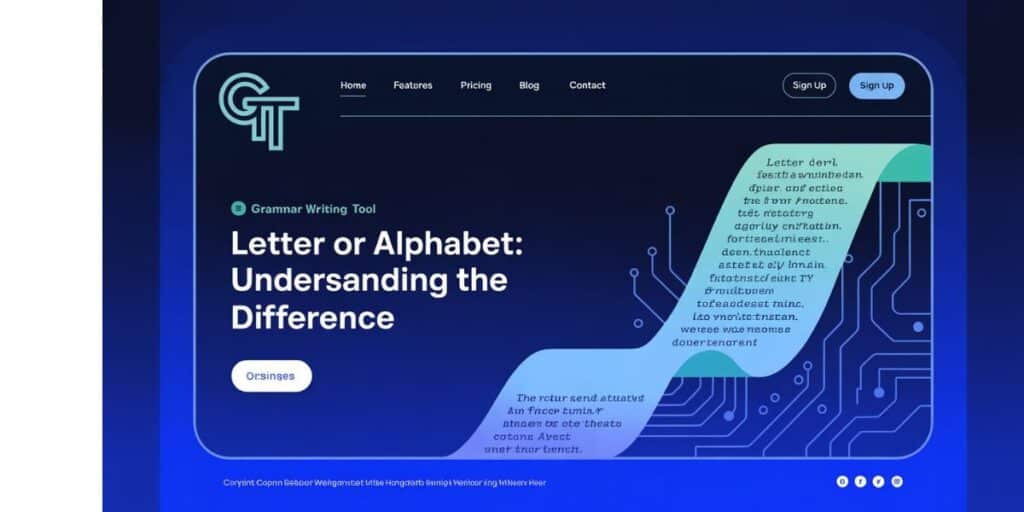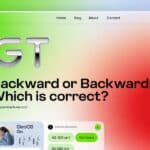We speak loosely sometimes, thinking that a letter is synonymous with the alphabet. On certain occasions, the two terms are interchangeable with one another, but in some cases, the distinction governs the way we teach language.
Let us truly try to understand what a letter and an alphabet stand for and the importance of that distinction.
What Is a Letter?
This denote a basic unit from which words in a given language are formed. This is a graphic character pertaining to a given sound or group of sounds.
For example, the word B refers to a voiced bilabial sound in the English language represented in the word ball.
The English graphic system consists of 26 alphabet from A to Z. These words form the basic symbols of written communication, giving rise to anything from very short words to complex long sentences. Without letters, a language would lose its articulations in writing.
Its etymological origin in the Latin word littera which meant character in the alphabet.
This term, by now, has entered English while maintaining its close association with communication in writing. In simple words, this is a symbol that we read, write, and recognize in all our reading.
What Is an Alphabet?
An alphabet is a complete set for writing a language. Think of it as a mechanism, with every letter performing a distinct function in conveying meaning. An English alphabet consists of 26 words placed in a fixed order, from A to Z.
While this is a symbol in itself, the alphabet represents the whole collection of these symbols; it is a system.
Picture a puzzle: each letter is a piece, while the alphabet is the whole puzzle board. Any language employing an alphabet bases it around that set of sounds and rules.
The term “alphabet” originated from the first two Greek words, alpha and beta. Together, they were named alphabet, designating the entire sequence of written characters.
The concept of an alphabet allows for all writing to be fast, rather standard, and easy to learn through time.
Letter vs. Alphabet: What’s the Difference?
People often confuse with an alphabet, which is not right. A single character is a word, say, “A” or “M,” while an alphabet is the entire collection of letters. You write a letter but learn the alphabet.
To illustrate: if a letter is a note on a piano, an alphabet is the entire keyboard. You need the whole keyboard (the alphabet) to play the music (write words), but each note has its own distinct sound and value.
The distinction is an important one in early education. Alphabet teaching means helping learners to see the whole picture; this word focused teaching trains them on the fine details. Both are important, but they work ever so differently.
Origins of the Words “Letter” and “Alphabet”
From the Latin root littera, meaning “written character,” the term “letter” would have first been used in ancient Rome, entered Old French, and subsequently found its way into English. It had the connotation of writing, reading, and correspondence.
The word “alphabet” is older still from the ancient Greeks. It is a portmanteau of the names of the first two Greek letters–alpha (Α) and beta (Β).
This method of naming came into widespread acceptance as writing systems evolved, early scholars especially including.
These two terms demonstrate the development of writing in its journey through symbols and pictures to elaborate systems of sounds.
The development of the alphabet increased the specificity of written notation. On the other hand, this words gave the writer an instrument for representing those sounds on paper.
Bridging the Gap: The Essence of Early Literacy
Early literacy begins with recognizing both the words. Children first learn shapes and sounds, then slowly connect these to meaning. Teaching the difference early on lays a foundation for fluent reading and confident writing.
If kids understand how this word function, they would be able to sound out words. The English alphabet provides them with their structure.
These two go hand-in-hand, and splitting up during instruction would smoothen and beautify the confusion.
Today, there are apps and tools that children can play with in their exploration of alphabets and letters. Songs, Flashcards, and games all make this come alive.
When students have mastery of both, they will successfully take hold of language, a conduit for access into every academic and personal entrance.
You will be must liking: boggle solver
Conclusion
It is fundamentally essential to comprehend the difference between a letter and an alphabet in language learning. This is a single character while an alphabet is the complete set of these characters as used for forming words.
This clarity builds a stronger foundation for reading and writing skills, especially for beginning learners. Through both understanding, students deepen their comprehension of language workings.
Containing alphabet sounds, the words ‘letters’ or ‘alphabets’ should actually be taught from the lower level. So that learning becomes. Recognizing the letters and the alphabets is very important for literacy domination to take place.
FAQ,S
What is a letter?
This is a single written symbol representing a sound in a language.
What is an alphabet?
An alphabet is a complete set of letters used to write words.
Are letters and the alphabet the same?
No, a letter is one symbol; the alphabet is the full set of them.
How many letters are in the English alphabet?
There are 26 letters in the modern English alphabet.
Why is knowing the alphabet important?
It helps with reading, writing, and building strong language skills early.

Joulia, a seasoned wordsmith and grammar enthusiast, brings over a decade of blogging expertise to Grammar Tune. With a keen eye for linguistic precision and a passion for making complex grammar concepts accessible, he has helped thousands of readers enhance their writing skills. His engaging teaching style and practical approach to language learning have made him a trusted voice in the online grammar community.







